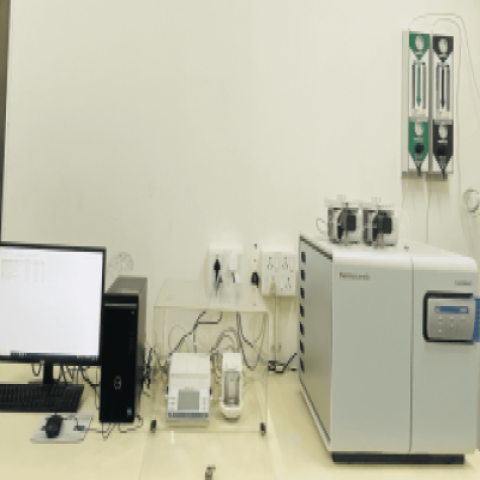
External users: registration to be carried out only through I-STEM portal
Additional information about sample and analysis details should be filled in the pdf form provided in the I-STEM portal under “DOWNLOAD CSRF”
Internal users (IITB): registration to be carried out only through DRONA portal
Additional information about sample and analysis details should be filled in the pdf form provided here.
.
Category
- Material Characterization » Chemical Characterisation
Booking Details
Facility Management Team and Location
Facility Features, Working Principle and Specifications
The CHNS(O) Analyzer find utility in determining the percentages of Carbon, Hydrogen, Nitrogen, Sulphur and Oxygen of organic compounds, based on the principle of "Dumas method" which involves the complete and instantaneous oxidation of the sample by "flash combustion". The combustion products are separated by a chromatographic column and detected by the thermal conductivity detector (T.C.D.), which gives an output signal proportional to the concentration of the individual components of the mixture.
There are different techniques for the determination of CHN\CHNS\O. It brings a new level of precision, accuracy, speed of analysis and ease of operation.The built in chromatographic column converts the compound and elutes it in the form of NO2,CO2, SO2,H2O which are then detected with the help of Thermal Conductivity Detector.
The instrument is calibrated with the analysis of std compounds using the K-factors calculations. Thus the instrument ensures maximum reliability of the results because the combustion gases are not split or diluted but directly carried to build in GC system simultaneous determination of CHNS can be done in less than 10 mins. This method finds greatest utility in finding out percentages of C, H, N, S, (O) in organic compounds which are generally combustible at 1800o C.
Key components of CHNS are auto sampler, combustion reactors ,chromatographic column, and T.C.D. detector.
Sample Preparation, User Instructions and Precautionary Measures
Sample must be pure and all contaminants must be removed.
Sample weight should be in between 4-5 mg.
- Liquid samples should have constant weight
CHNS (O) Analyzer Charges excludes GST:
|
Charges for Analytical Services in Different Categories
Applications
- Organic compounds
- Pharmaceuticals
- Food & Agricultural Industries
- Chemistry & Chemical Engineering
- Geological & Environmental samples
- Organometallics
- Gasoline and fuels
- Coal and coke
- Graphite and carbides
- Metals and alloys
- Polymers and explosives
- Building materials and your samples…
